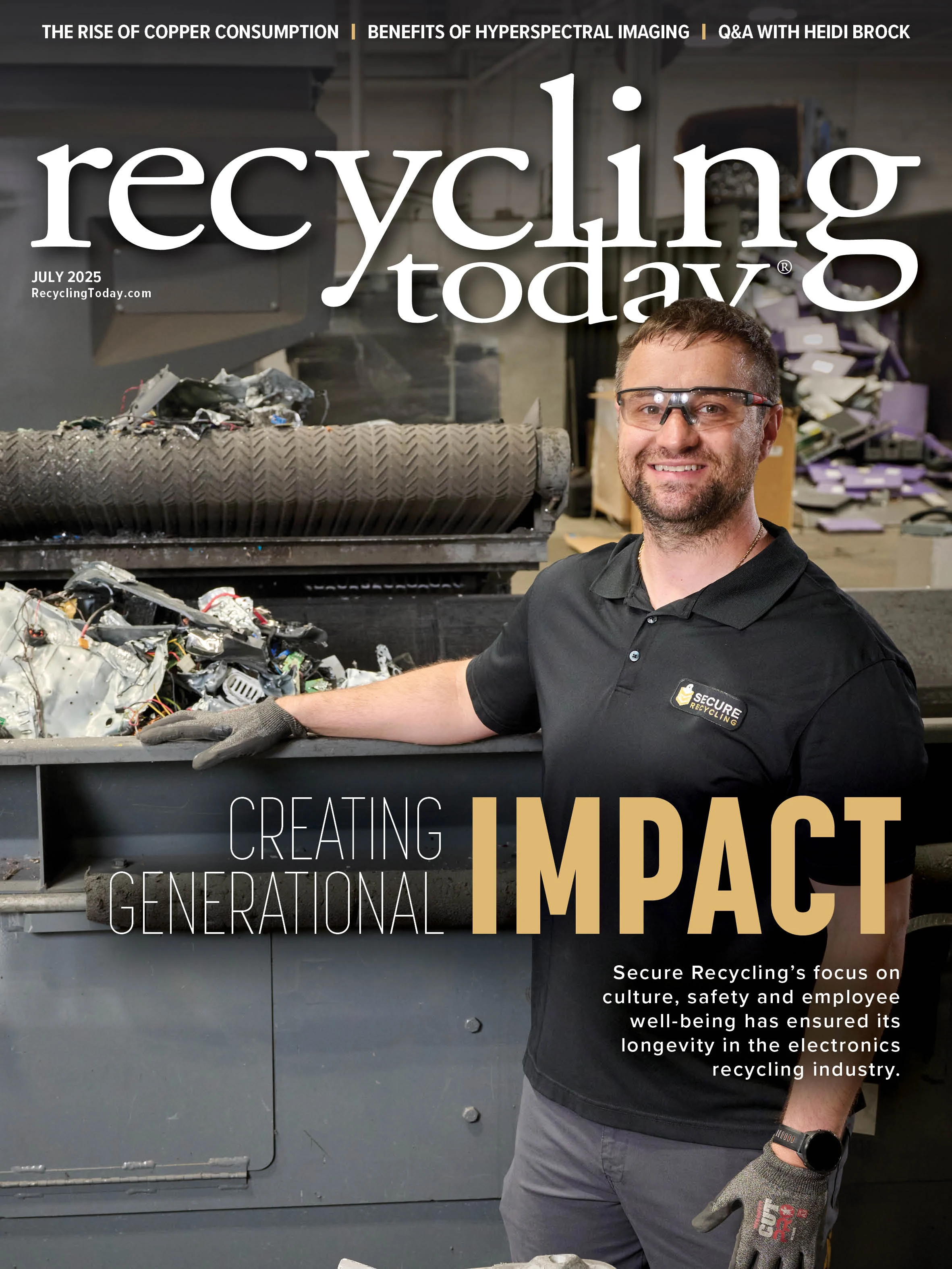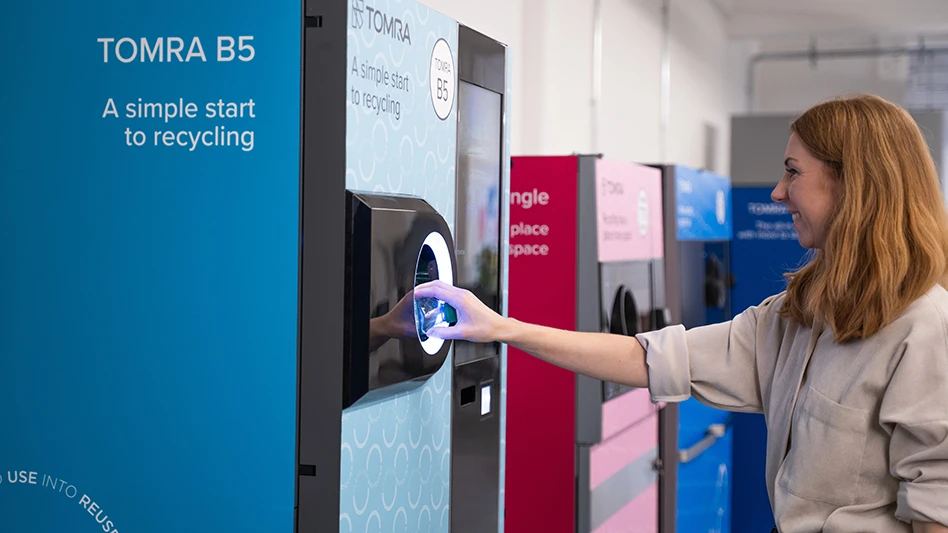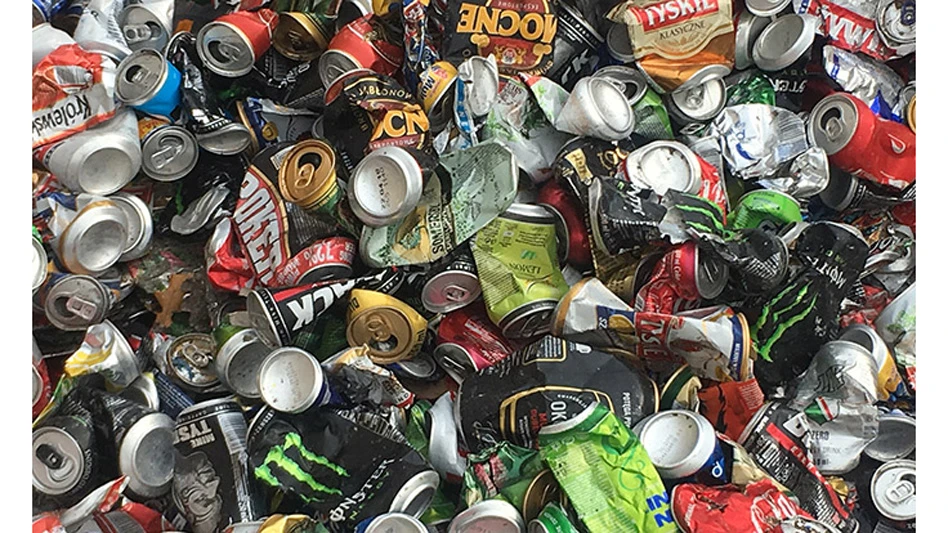
From a young age, Heidi Brock has been fascinated with the paper industry, spending much of her career advocating for paper and wood products manufacturers. After an eight-year stint in the metals industry, she returned to her “roots” in 2019 to continue that advocacy.
Brock was named president and CEO of the Washington-based American Forest & Paper Association (AF&PA) in 2019, serving as what the organization calls “the chief advocate” for the industry. Previously, she served as president and CEO of the Arlington, Virginia-based Aluminum Association from 2011-2019 after an 18-year tenure at Weyerhaeuser as well as serving on the staffs of former Sens. Dan Evans and Slade Gorton.
“When the opportunity came to join AF&PA, I was thrilled to return to my roots in the paper industry,” she says.
Since joining the AF&PA, the group says Brock’s strategic vision has strengthened its advocacy mission and increased membership, along with guiding the AF&PA through the COVID-19 pandemic with a “steadfast focus on workplace safety” and ensuring manufacturers could continue delivering essential products.
Additionally, since Brock came on, AF&PA has earned three American Society of Association Executives Silver Awards for its efforts to promote the forest products industry and, in 2022 and 2023, Brock was named one of Washington’s 500 Most Influential People by Washingtonian Magazine along with being awarded the John H. Graham IV Association Executive Award in 2023 by the Boy Scouts of America, National Capital Area Council.
In the following interview that has been edited for clarity and conciseness, Brock discusses the evolution of the paper industry, the impact of extended producer responsibility (EPR) laws and how AF&PA’s new recycling rate methodology better reflects recycling practices.
“The benefits our mills have in small towns is undeniable, and it is truly an honor to advocate on behalf of the hardworking people making products right here in [the U.S.]” – Heidi Brock, president and CEO, the American Forest & Paper Association

Recycling Today (RT): What has your recycling industry journey been like? How did you land at AF&PA?
Heidi Brock (HB): My fascination with the paper industry began at a young age, growing up near a paper mill in Walla Walla, Washington. This early exposure to how an industry becomes fundamentally ingrained into the community in which it operates, combined with my family’s experience with public service, is ultimately what shaped my future.
I started my career on Capitol Hill working on natural resources and environmental issues for Sens. Daniel Evans and Slade Gorton and spent nearly 20 years on Weyerhaeuser’s government affairs team before joining the Aluminum Association as president and CEO.
When the opportunity came to join AF&PA, I was thrilled to return to my roots in the paper industry. AF&PA members make nearly 90 percent of the pulp, paper, paper-based packaging and tissue products made in the U.S. At paper mills across the country, recycled paper is used to make the essential products millions of people rely on every day.
One of my favorite things about visiting our members and their mills is seeing the dedication it takes to manufacture these products. The benefits our mills have in small towns are undeniable, and it is truly an honor to advocate on behalf of the hardworking people who are making products right here in [the U.S.]
RT: How have you seen the recycling industry—specifically paper recycling—evolve over your career?
HB: Sustainable practices are the foundation of the paper industry, and I can proudly say that we have been at the forefront of paper recycling for decades. In 2011, AF&PA became one of the first manufacturing industries to voluntarily set quantifiable sustainability goals as part of our “Better Practices, Better Planet 2020” initiative. Our members met or exceeded many of those goals, and their success inspired us to expand on our commitments and set new sustainability targets for 2030.
In particular, we have a goal [to increase] the utilization of recycled fiber and wood residuals in manufacturing across the industry to 50 percent. These voluntary commitments, combined with billions of dollars in voluntary industry investments into recycling infrastructure, are what have made paper one of the most widely recycled materials in America.
RT: Is AF&PA working on any initiatives or projects that you can discuss?
HB: A core component of paper recycling is ensuring the fiber entering our paper mills is capable of being turned into new products. We recently worked with the Fibre Box Association to launch an update to our voluntary standard for repulping and recycling treated or coated cardboard to ensure alignment with the technology in use today.
The updated voluntary standard helps our industry develop even more innovative recyclable coatings and treatments.
Similarly, our “Design Guidance for Recyclability” serves as a reference for our industry’s supply chain in designing and manufacturing paper packaging to ensure their products are recyclable.

RT: AF&PA has taken a stance against EPR because of its potential impact on established paper recycling systems. How does EPR negatively impact paper recycling?
HB: Paper recycling rates across the U.S. are consistently high. That isn’t an accident—our industry has a unique ownership stake in the recycling system. AF&PA members own and operate more than 100 material recovery facilities nationwide where recyclables are sorted and processed.
EPR legislation proposes a one-size-fits-all solution that would require paper producers to subsidize efforts to improve recycling rates for other materials. These fees will significantly impact the voluntary investments that make paper recycling a success while at the same time increasing costs for consumers. We believe great innovation occurs as a result of a free and fair recycling market and that is critical to build on our industry’s recycling success.
RT: The industry has invested heavily in recycled paper production over the last several years. What kind of impact has that had on the overall paper and forest products industry?
HB: As part of our commitment to recovering and using more recycled paper and cardboard, the paper industry continues to announce investments that will increase the use of recycled material in new paper products. We see members building new mills, updating existing machinery and advancing manufacturing technologies to use even more recycled paper in our products.
RT: AF&PA recently updated its methodology for calculating the paper recycling rate. How does this revision more accurately reflect the state of paper recycling? In revising the methodology, did anything stand out or surprise you about what the new calculations revealed?
HB: Previously, the AF&PA paper recycling rate measured the amount of paper recycled as a share of the amount of paper used. On a basic level, to calculate this rate, we divided the amount of recovered paper and paperboard used to manufacture new products by the amount of new paper produced in our mills and imported from overseas trading partners.
However, our updated rate is calculated as the amount of paper recycled as a share of the amount of paper available for recovery. The key difference in our updated methodology is that our new rate is calculated using more detailed trade data to improve the estimate of net imported packaging—which is historically difficult to estimate—while also factoring in deductions for paper products like tissue, construction paper and specialty papers that are not typically recovered for use in manufacturing.
The biggest takeaway is that the overall paper recycling rate was largely unchanged, from 67.9 percent in 2022 to between 65-69 percent in 2023. This change is because aspects of the calculations of our updated methodology are based on estimates, which makes the rate best expressed as a range.
We plan to release the 2024 paper recycling rate later this summer.

RT: What are the biggest challenges paper recyclers currently face?
HB: Policy uncertainty creates an unpredictable future for any business, whether it is policy coming from local, state or the federal level. Recycled paper products are a key component of the circular value chain that makes our industry a success. It’s a cycle that keeps going.
This is why EPR proposals are of particular concern. Consistently high paper recycling rates prove our industry is committed to improvement and investment and that government intervention is not necessary. To underscore this point, we are already seeing overly complicated fee structures and requirements emerging in the first few states who are working to bring their EPR programs online.
We look forward to continued engagement to help mitigate impacts on paper as much as possible, but there is much work to be done.
RT: How about opportunities? Where are the biggest areas for improvement when it comes to paper recycling, and how is AF&PA working with the industry to improve?
HB: There is great opportunity to further improve residential recycling. While 94 percent of Americans have access to community paper recycling programs and 79 percent have access to residential curbside recycling programs, having this access also requires education on how to properly recycle paper and paper packaging products. There are about 9,000 residential programs across the country that are generally administered by localities and with varying recycling guidelines. This is why AF&PA supports legislative efforts like the STEWARD Act that aim to improve recycling accessibility and collect and disseminate data on recycling and composting programs in the U.S. (Editors’ note: The STEWARD Act, or the Strategies to Eliminate Waste and Accelerate Recycling Development Act, passed the U.S. Senate Environment and Public Works Committee in February. It has not yet advanced to the full Senate for consideration.)
RT: How do you hope to see the paper and/or paper recycling industry evolve through the second half of this decade?
HB: I am very confident in our industry’s next generation of talent to continue to evolve and improve on our significant success. From innovations in the manufacturing process to our end products, advancements in technology and cutting-edge solutions are already shaping the future of our vital sector.

Explore the July 2025 Issue
Check out more from this issue and find your next story to read.
Latest from Recycling Today
- ReMA urges open intra-North American scrap trade
- Axium awarded by regional organization
- China to introduce steel export quotas
- Thyssenkrupp idles capacity in Europe
- Phoenix Technologies closes Ohio rPET facility
- EPA selects 2 governments in Pennsylvania to receive recycling, waste grants
- NWRA Florida Chapter announces 2025 Legislative Champion Awards
- Goldman Sachs Research: Copper prices to decline in 2026





